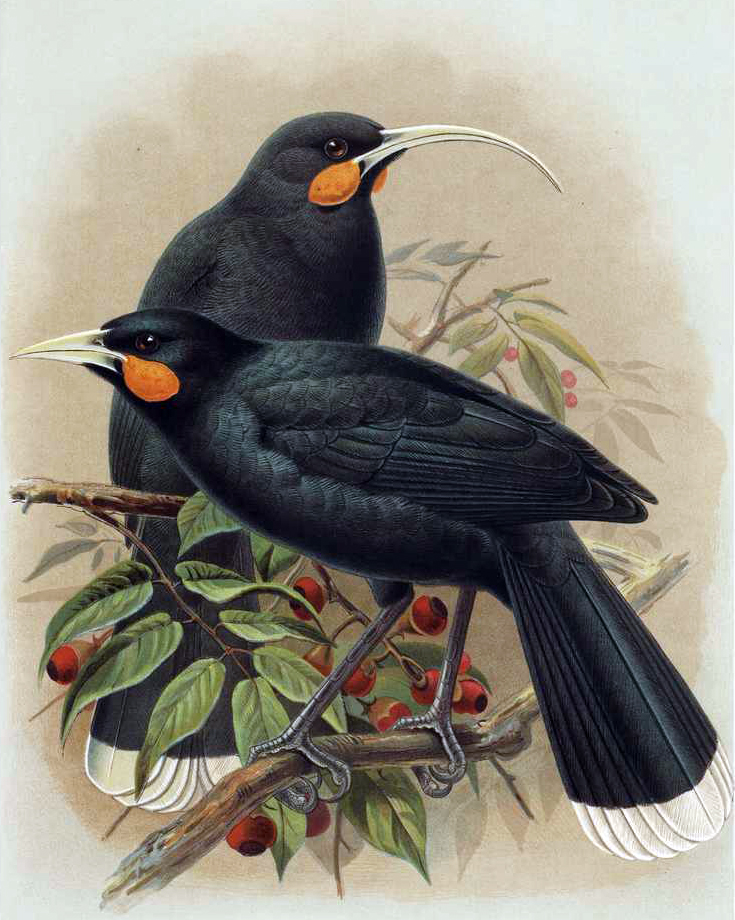
Huia (Heteralocha acutirostris)
The Huia was the largest New Zealand wattlebird species. It was a striking large songbird, similar in size to the magpie, mainly black with white-tipped tail feathers. The species was sexually dimorphic, the sexes had dramatically different bill sizes and shapes (as seen in the illustration above.) A fleshy orange wattle hung at the base of each side of the bill.
Pre-human bone remains indicate the birds were common throughout the North Island of New Zealand but absent from South Island. The birds lived in forests and it is believed that they moved seasonally, living at a higher elevation in summer and descending to a lower elevation in winter. Huia were omnivorous and ate adult insects, grubs and spiders, as well as the fruits of some native plants.
The species was regarded by Māori as sacred, and the wearing of its skin or feathers was reserved for people of high status. The birds are also prominent in Māori culture and oral tradition

Habitat loss, competition from and predation by introduced species, hunting, and disease have all been implicated in the extinction of the Huia.
